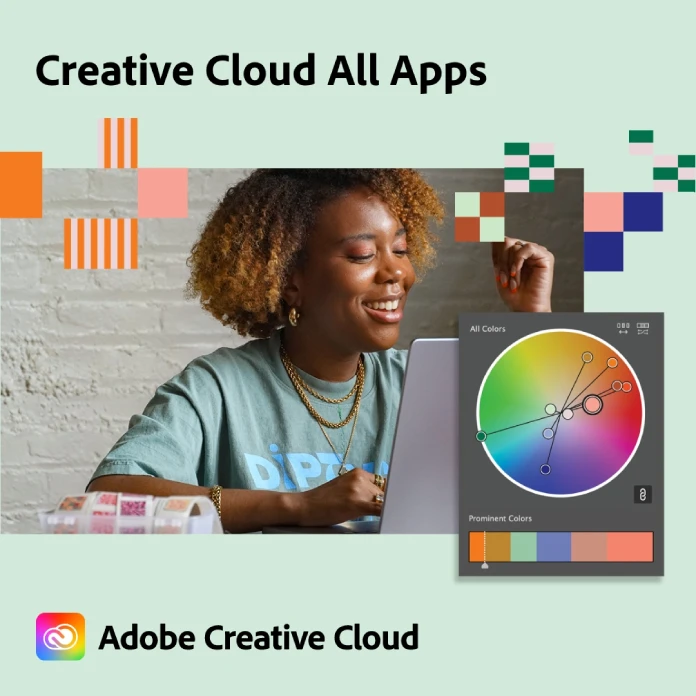This post contains affiliate links. We may earn a commission if you click on them and make a purchase. It’s at no extra cost to you and helps us run this site. Thanks for your support!
Why Are AI Tools Essential for Business Growth in 2026?
Artificial intelligence (AI) moved from experimentation to necessity. By late 2025, nearly nine out of ten companies used AI in at least one business function, up from roughly half a few years earlier. Surveys show that roughly a third of organizations applying generative AI report major productivity gains. AI isn’t just hype; it fuels revenue, speeds up decisions, and frees humans for higher‑value work. Today, the question isn’t “if” but “which tools will make the biggest difference?”
At its core, AI automates routine tasks, analyses massive data sets, predicts outcomes, and adapts in real time. That automation creates scale, personalization, and insight that no human team can match. Businesses can run leaner operations, personalize every customer interaction, and predict market shifts before competitors notice. As 2026 approaches, AI tools will become even more agentic: chatbots will act as digital coworkers; generative video will rival studio production; and integrated AI platforms will link sales, marketing, and operations into one smart system.
The following sections outline the most influential AI tools across six categories: productivity & collaboration, marketing & sales, customer support, creative & content generation, analytics & decision‑making, and coding & development. Each subsection offers a critical perspective, balanced pros and cons, and personal reflections on how these tools can drive growth.
Productivity & Collaboration: Streamlining Workflows and Decision‑Making
Microsoft 365 Copilot – The Office Workhorse
Microsoft 365 Copilot integrates generative AI across Word, Excel, Teams, Outlook, and other apps. Deep integration keeps adoption friction low, and many companies report double‑digit productivity improvements. Copilot acts as a force multiplier, automatically drafting documents, summarizing meetings, and generating analyses so employees can focus on strategy. A recent study found that small‑to‑medium businesses saw triple‑digit return on investment over three years.
Yet Copilot isn’t perfect. Organizations must supply high‑quality data for accurate results; poor data leads to hallucinations or bias. Complex reasoning still requires human judgment, and enterprise licensing can be expensive. Strategic adoption means more than saving time; it demands cultural change where teams ask “what insights can we pull from our data?” and not just “how can we write emails faster?” In my view, Copilot’s true power lies in its ability to reframe work: by automating repetitive reporting, it invites employees to think creatively and drive innovation.
HubSpot AI – Hybrid Human‑AI Teams for Growth
HubSpot is embedding AI deeply into its CRM. New features like the Data Hub unify and clean data while Breeze Agents automate tasks. Its AI‑powered Configure‑Price‑Quote tool helps sales teams assemble proposals. Pros include integrated AI agents across teams; customer agents that resolve queries around the clock via WhatsApp, email, or Messenger; and built‑in analytics that improve over time. Recent reports indicate the company has embedded over eighty AI features across its hubs.
However, customizing these agents requires time and careful tuning; the Breeze customer agent follows a credit‑based pricing model that some companies find confusing. Poor CRM data can lead to poor responses, and overreliance on AI may alienate customers who want human interaction. HubSpot envisions hybrid teams where AI handles routine tasks, and humans tackle strategic decisions. For businesses aiming to scale marketing and sales without ballooning headcount, HubSpot’s AI ecosystem offers a compelling path, but managers must invest in governance and training.
Notion AI and Slack AI – Smart Productivity for Remote Teams
Remote teams need integrated tools that keep projects, documents, and communication in sync. Notion AI combines note‑taking, task management, and knowledge sharing with AI features that summarize notes, draft pages, and generate task lists. Slack AI provides conversation summaries, AI‑powered search, and automated meeting notes. These tools address pain points like time‑zone coordination and missed discussions by surfacing relevant information when team members log in. When used together, they create a self‑updating knowledge base: Notion organizes the work, Slack captures the conversations, and AI ties them together.
Zapier AI – Natural‑Language Automation
Zapier AI turns automation into conversation. The tool connects more than 6,000 apps and allows users to create workflows by describing them in plain language. For example, a small business owner could say, “When a customer fills out a form on my website, add them to my CRM and send a follow‑up email.” Zapier AI interprets and builds the workflow automatically. The ability to automate cross‑platform processes without coding democratizes AI for non‑technical teams and helps companies scale operations with minimal overhead.
Marketing & Sales: From Lead Generation to Personalized Campaigns
Jasper AI – High‑Quality Content at Scale
Jasper AI focuses on marketing content: blogs, ad copy, social media posts, emails, and long‑form articles. Its templates and frameworks accelerate creation, and its “brand memory” feature maintains tone across campaigns. Jasper supports team collaboration and integrates with SEO tools to optimize content. Case studies indicate businesses using Jasper have cut time‑to‑publish by up to eighty percent while boosting campaign ROI.
The downside? Without strategic guidance, Jasper can produce generic, low‑originality output. Teams may lean too heavily on AI, reducing creativity and failing to craft messages that truly resonate. Enterprise pricing can also be high. My recommendation is to use Jasper for first drafts and ideation while investing human effort in refining voice and strategy.
Copy.ai and Content at Scale – AI Copywriters for Every Channel
Copy.ai produces marketing copy, product descriptions, and email sequences. It offers tone customization, plagiarism checks, and multi‑format output. Content at Scale automates long‑form blog writing with built‑in plagiarism and SEO checks. Both tools help small marketing teams produce professional content quickly. They are ideal for startups that need to build brand authority but lack large content teams. Yet, as with Jasper, these tools require careful human review to avoid hallucinations or factual mistakes.
HubSpot AI for Marketing Automation
HubSpot’s marketing automation suite integrates AI into CRM and campaign management, offering smarter workflows, lead routing and predictive analytics. Marketo Engage, ActiveCampaign, Zapier, and Drift also fall into this category. AI automates repetitive marketing tasks, qualifies leads, and orchestrates personalized journeys across channels. Autopilot uses AI‑powered segmentation and lead nurturing flows to improve conversion rates. These tools free marketers to focus on creative strategy while ensuring prospects receive timely, relevant messages.
Social Media & Engagement Platforms
For social media managers, tools like Buffer AI Assistant, Hootsuite OwlyWriter, Lately.ai, and FeedHive suggest post ideas, generate captions, repurpose long‑form content, and optimize posting times. Brandwatch monitors brand mentions and competitor trends across social platforms. When paired with generative AI art tools, these platforms create a continuous pipeline of engaging content. Yet organizations must maintain authenticity; audiences still value genuine voices amid algorithmically generated posts.
AI‑Powered Sales Development: Artisan AI
Sales prospecting remains one of the most time‑consuming business functions. Artisan builds AI “employees” that automate outbound business development. Its agent Ava handles up to 80 % of outbound sales tasks—researching leads, personalizing outreach, managing deliverability, and follow‑ups. Ava uses a large B2B contact database and a “personalization waterfall” to craft highly targeted multi‑channel sequences. Pros include large data sets, automated email and LinkedIn sequences, and continuous learning for better personalization.
However, not every company is a fit. High usage fees, limited utility for customer service, and the risk of over‑automation can erode brand perception. Some users report many messages but few converted replies, underscoring the need for human oversight and strategy. When used responsibly, AI SDRs allow sales teams to focus on building relationships and closing deals while the machine handles repetitive prospecting.
AI for Account‑Based Marketing and Analytics
For B2B companies focusing on account‑based marketing, 6sense predicts in‑market accounts and prioritizes outreach. MadKudu scores and segments leads based on intent data. Crimson Hexagon (now part of Brandwatch) analyzes audience insights for sentiment analysis and trend discovery. PathFactory maps content journeys and recommends next‑best assets to visitors. When combined with Google Analytics 4 and Tableau with Einstein AI, these tools turn customer behavior into actionable insights, helping marketers make data‑driven decisions.
Customer Support & Service: Intelligent Agents and Autonomy
Forethought AI – Autonomous Ticket Resolution
Forethought AI uses large language models to triage customer support tickets and provide contextual answers. It learns from historical data to resolve common issues and escalates complex queries to human agents. A similar tool, NiCE CXone, integrates generative AI into omnichannel customer service, combining chatbots, knowledge bases, and agent assist features. These systems reduce response times, improve customer satisfaction, and free support teams for more nuanced problems. However, businesses must continuously monitor AI outputs to avoid inaccurate or insensitive replies.
Breeze Agents in HubSpot CRM
HubSpot’s Breeze Agents automate support tasks across channels like WhatsApp and Messenger. They handle routine queries, work with unstructured data such as PDFs and web content, and hand off complex issues to humans. These agents emphasize trust and safety by allowing businesses to configure approval flows and guardrails. Yet, heavy use may be costly, and the credit‑based pricing model can be confusing. Implementing such agents requires robust knowledge bases and continuous tuning.
Deel AI and Eqvista – HR and Compliance Simplified
For global teams, Deel AI simplifies payroll and HR, managing compliance with local labor laws and automating onboarding tasks. Eqvista streamlines equity management with automated cap table tracking and compliance tools. These AI‑driven HR platforms reduce administrative overhead and ensure regulatory compliance, enabling businesses to focus on culture and talent rather than paperwork.
Creative & Content Generation: Images, Video, and Interactive Media
Midjourney, DALL·E 3, and Stable Diffusion – Generative Visuals
Generative image models transform text prompts into striking visuals. Midjourney lets users control style, materials, and artistic movements, producing images for concept art, product design, and marketing materials. Stable Diffusion offers customizable styles, image‑to‑image generation, and open‑source flexibility, though it requires more technical expertise. DALL·E 3 integrates with ChatGPT and provides realistic image generation with editing capabilities. These tools democratize visual design, but they also raise questions about originality and copyright. Designers should treat AI as a starting point and refine outputs to align with brand aesthetics.
Runway and Synthesia – AI Video Creation
Runway ML provides an intuitive platform for text‑to‑video generation, style transfer, and video editing. Marketers can create production‑ready clips without professional editing skills. Synthesia turns text into professional videos using AI avatars and studio‑quality voiceovers in over 140 languages. It reduces the cost and time of video production and supports training materials, marketing explainer videos, and internal communications. However, AI avatars may lack the authenticity of real presenters, and customization requires careful tuning. Runway and Synthesia are ideal for businesses that want to scale video content but must be balanced with genuine human storytelling.
Canva Magic Studio and Descript – Design and Editing Helpers
Canva Magic Studio combines drag‑and‑drop design with AI features like Magic Write and text‑to‑image generation. It enables non‑designers to produce polished graphics quickly. Descript uses AI to edit videos by editing text transcripts, allowing teams to craft podcasts, webinars, and marketing explainers without specialist software. Together, these tools democratize creative production and help small businesses compete with professional agencies.
Storydoc – Interactive Presentations
Storydoc transforms static slide decks into interactive, data‑driven presentations with real‑time analytics. AI helps identify the most engaging narrative flow and recommends visuals based on the audience. Sales teams use it to personalize proposals, while educators use it for dynamic lesson materials. The ability to capture viewer analytics helps presenters refine content for maximum impact.
Analytics & Decision‑Making: Predictive Insights and Strategy
Data‑driven decisions separate high‑growth businesses from the rest. AI‑powered analytics tools such as Bunker perform instant data analysis and visualization for marketing and financial performance. 6sense, MadKudu, and Brandwatch’s Crimson Hexagon predict buyer intent, identify high‑value prospects, and analyze sentiment across social media. PathFactory recommends content based on user behavior.
For leadership teams, Google Analytics 4 and Tableau with Einstein AI provide predictive modelling and trend forecasting. They turn complex data into stories that inform strategy. Bunker stands out for remote businesses because it consolidates marketing and finance metrics in one dashboard, providing actionable insights without a data team. These tools emphasize that AI isn’t just about generating content; it’s about understanding what content resonates and why.
Coding & Development: Accelerating Innovation
GitHub Copilot – AI Pair Programmer
GitHub Copilot suggests code snippets and functions as developers type, supporting multiple languages and integrating into editors like VS Code. It increases coding efficiency and reduces boilerplate. Copilot is ideal for prototyping and repetitive tasks, but overreliance can lead to skill erosion and potential copyright concerns. Teams should treat Copilot as an assistant and continue to review and refactor code thoughtfully.
Claude, ChatGPT, and Google Gemini – Advanced Language Models for Development
Claude AI by Anthropic excels at content summarization and advanced reporting. It follows complex instructions and can produce structured documents and data reports. ChatGPT, powered by GPT‑4 Turbo, offers conversational memory across entire sessions, code generation, document analysis for large files, image integration via DALL·E 3, web browsing, and custom GPT creation. It is used for content creation, customer service bots, software development assistance, research, and data analysis.
Google Gemini, built on the Gemini Ultra model, supports multimodal input (text, images, audio, video), draws real‑time information from Google Search, and offers a million‑token context window. It integrates with Google Workspace apps and provides a code execution environment for data analysis and workflow automation. For businesses invested in the Google ecosystem, Gemini offers a powerful, secure alternative to other language models. The key is to evaluate privacy needs and integration requirements when choosing between ChatGPT, Claude, and Gemini.
Choosing the Right AI Tools: Questions to Ask
With so many AI tools, selection can feel overwhelming. Here are questions to guide your choice:
- What problem are you solving? Identify whether you need content generation, workflow automation, analytics, coding support, or customer service. Each category requires different tools.
- How mature is your data? Tools like HubSpot AI and Copilot rely on clean, comprehensive data to deliver accurate outputs. Invest in data hygiene before deploying AI at scale.
- What level of control do you need? Open‑source tools like Stable Diffusion offer customization but require technical expertise. Fully managed platforms like Jasper or ChatGPT are easier to use but less customizable.
- How will AI integrate with existing workflows? Consider whether the tool integrates with your CRM, ERP, communication, and design software. Zapier AI can connect disparate systems.
- What are the ethical and governance implications? AI introduces risks around bias, data privacy, and accountability. Choose vendors that prioritize transparency and allow you to set guardrails.
Looking Ahead: Trends Shaping AI Tools in 2026
Generative AI will continue to evolve rapidly. Predictions suggest that agentic chatbots will become autonomous assistants that plan and execute tasks across apps, generative video will become mainstream, authenticity will become a premium amid AI‑generated content, and synthetic data will enable powerful analytics while preserving privacy. Businesses will need to balance automation with authenticity and invest in upskilling employees to work alongside AI.
Another important trend is the rise of privacy‑focused models. Governments and enterprises will demand solutions that handle sensitive data without exposing it to external vendors. Tools like Gemini Enterprise and ChatGPT Enterprise already offer stronger privacy controls.
Finally, AI will democratize creativity. Midjourney, DALL·E 3, and Synthesia enable anyone to create high‑quality visuals and videos. As creative AI improves, designers and marketers can focus on storytelling and strategy, leaving routine production to algorithms. This shift will favour brands that invest in narrative and human insight.
Final Thoughts
The best AI tools for business growth in 2026 are not one‑size‑fits‑all; they are carefully chosen to align with specific goals, data maturity, and culture. Tools like Microsoft 365 Copilot, HubSpot AI, Jasper AI, and Midjourney empower teams to produce more with fewer resources. Others like Artisan AI and Forethought AI, automate specialized functions such as sales prospecting and customer support. Still others, including ChatGPT, Claude, and Google Gemini, provide general‑purpose intelligence that can be tailored to countless workflows.
My advice: start with small pilots in areas that cause the most friction, measure outcomes rigorously, and scale what works. Pair AI automation with human creativity and oversight, maintain data integrity, and prioritize ethical considerations. Businesses that master this hybrid approach will not only grow faster but also build organizations that are agile, innovative, and ready for the AI‑driven future.
Browse WE AND THE COLOR’s AI section to learn more about the latest developments and trending tools.
Subscribe to our newsletter!

















